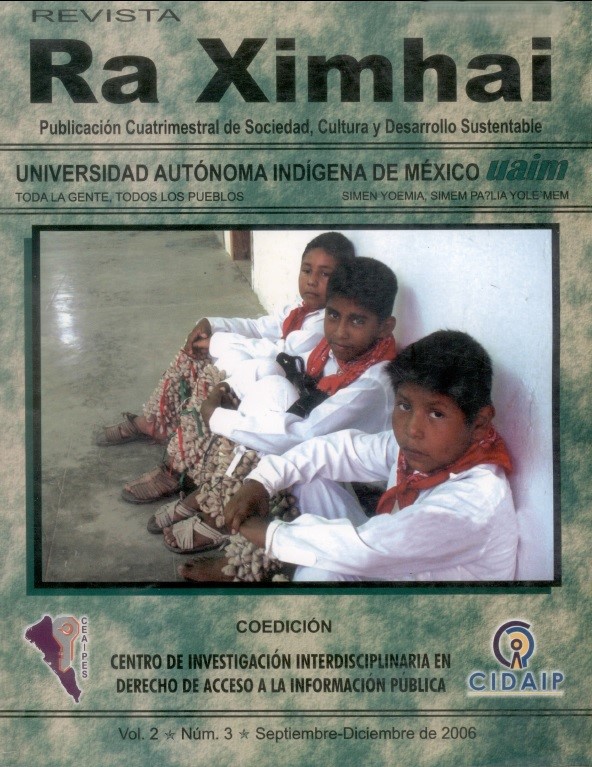Electoral reform in Mexico 1988-2000, in a competitive party system
DOI:
https://doi.org/10.35197/rx.02.03.2006.05.jcKeywords:
alternance, democracy, citizen, election, party-state, mexican presidencialismAbstract
An analysis of Mexico's electoral history is presented, and the electoral reforms carried out between 1989 and 1996 are explained. These reforms had in common: they were approved with the consensus of a plural party system, the creation of electoral regulations and the Federal Electoral Institute that organizes elections independently of the government. After 1988, the modus operandi of the Mexican political system changed, where the party-state regime lost the structures of control of the vote of the citizens who formed the ranks of corporatism in rural and urban areas, during the period of splendor of Mexican presidentialism. The electoral reforms granted freedom to the opposition political parties, political associations, citizens and their various civil organizations and non-governmental organizations to demand that the government respect the political, civil and social rights of citizens. The right to a free and secret vote and the unrestricted respect for the will of the majority, which is the basis and substance for the exercise of democratic and representative government, are highlighted. In 2000, citizens organized in opposition political parties managed to peacefully overthrow a party-state regime that had been in power for 71 years (through alternation), during which it generated exclusion, repression and neglect of the vulnerable and marginalized sectors of the country. Now with a competitive party system, citizens live in an environment with greater freedom and tolerance, and participate in competitive and transparent elections, through which they will assert their rights and be responsible with their civil, political and social obligations to demand that the rulers fulfill their commitments for the common good.
Downloads
References
Blauberg, I. 1996. Diccionario de filosofía. Ed. Quinto Sol. México.
Bobbio, N. 1986. El futuro de la democracia. Fondo de Cultura Económica. México. Cansino, C. 2000. La transición mexicana 1977-2000. Centro de Estudios de Política
Comparada, A. C. México.
Castellanos, H. E. 1996. Formas de gobierno y sistemas electorales en México (1940- 1994). Centro de Investigaciones Científicas Ing. Jorge L. Col. Tamayo, A. C. México.
Córdova, A. 1989. La revolución y el Estado en México. Era, México.
Castañeda, J. 1999. La herencia; arqueología de la sucesión presidencial. Alfaguara.
México.
González, C. P. 1984. La democracia en México. Era. México.
Huntington, S. 1994. La tercera ola; la democratización a finales del siglo XX. Paidós.
España.
Moctezuma, B. G. 1999. Derecho y Legislación Electoral; 30 años después de 1968.
UNAM y Editorial Porrúa. México.
Moore, S. 1997. Crítica de la democracia capitalista. Siglo XXI. México.
Rodríguez, A. O. 1996. Transición a la democracia; diferentes perspectivas. Centro de Investigaciones Interdisciplinarias en Humanidades UNAM, en coedición con Desarrollo de Medios, S.A. de C. V. y La Jornada Ediciones. México.
Salazar, A. F. 1998. El cambio democrático; en una visión de partido. Porrúa. México. Sartori, G. 1994. Teoría de la democracia. Alianza. México.
Shulgovski, A. 1980. México en la encrucijada de su historia. Ediciones de Cultura Popular. México.
Sills, A, D. 1979. Enciclopedia Internacional de las Ciencias Sociales. Española.
Madrid, España.
Rubio, L. 1998. La democracia verdadera; información ciudadana y política pública.
Aguilar León y Cal y Arena. México.
José Salvador Carmona Hernández
Ingeniero Agrónomo Especialista en Sociología Rural, egresado de la Universidad Autónoma Chapingo.
Downloads
Published
How to Cite
Issue
Section
License
Copyright (c) 2006 José Salvador Carmona Hernández , Carlos Jiménez Solares

This work is licensed under a Creative Commons Attribution-NonCommercial 4.0 International License.
Usted es libre de:
- Compartir — copiar y redistribuir el material en cualquier medio o formato
- Adaptar — remezclar, transformar y construir a partir del material
- La licenciante no puede revocar estas libertades en tanto usted siga los términos de la licencia
Bajo los siguientes términos:
- Atribución — Usted debe dar crédito de manera adecuada , brindar un enlace a la licencia, e indicar si se han realizado cambios . Puede hacerlo en cualquier forma razonable, pero no de forma tal que sugiera que usted o su uso tienen el apoyo de la licenciante.
- NoComercial — Usted no puede hacer uso del material con propósitos comerciales .
- No hay restricciones adicionales — No puede aplicar términos legales ni medidas tecnológicas que restrinjan legalmente a otras a hacer cualquier uso permitido por la licencia.








